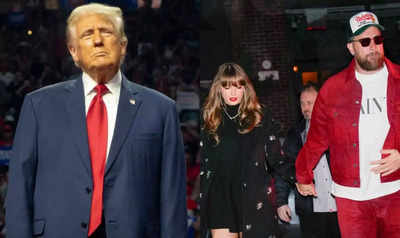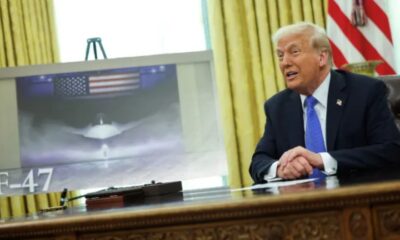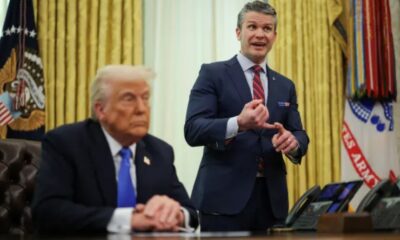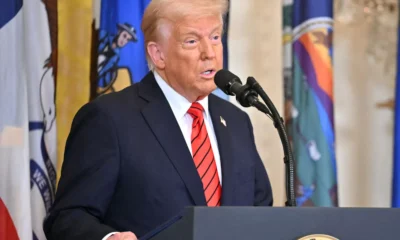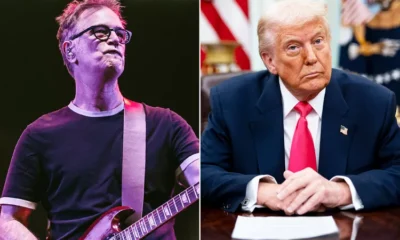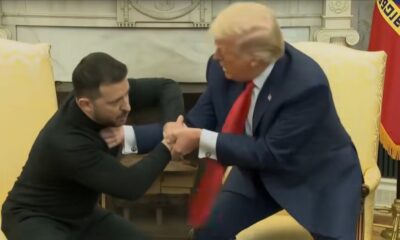CELEBRITY
Trump’s portrait to be taken down at Colorado Capitol after president claimed it was ‘distorted’
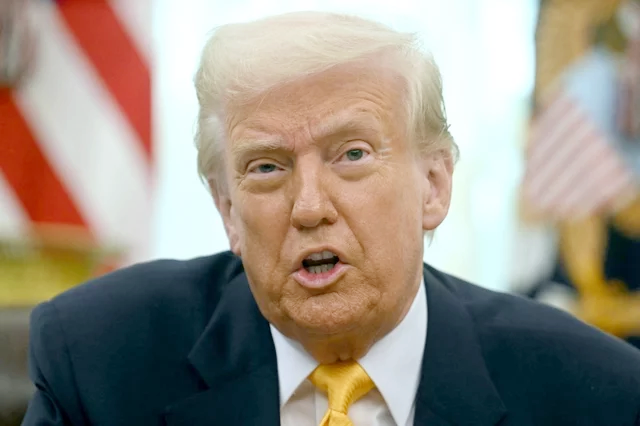
Trump’s portrait to be taken down at Colorado Capitol after president claimed it was ‘distorted’
**Trump’s Portrait to Be Removed from Colorado Capitol After Claims of ‘Distortion’**
In a move that has sparked widespread attention and debate, former President Donald Trump’s portrait is set to be taken down from the Colorado State Capitol. This decision comes after Trump himself voiced strong objections, claiming that the depiction of him in the portrait was “distorted” and did not accurately represent him.
The portrait in question was unveiled in 2019, amidst a flurry of political discourse. The artwork was meant to celebrate the former president’s time in office, as part of a broader tradition in which portraits of U.S. presidents are displayed in state capitols across the country. However, Trump’s reaction to the piece has been anything but celebratory.
### Trump’s Criticism of the Portrait
According to Trump, the portrait presented a version of him that he felt was “unflattering” and “distorted.” In a statement released through his office, the former president argued that the artist had failed to accurately capture his likeness, calling it a misrepresentation of his image and character.
The portrait was created by the artist Jon McNaughton, known for his politically charged and often controversial depictions of historical and contemporary figures. McNaughton, who is known for his conservative views, created the piece in a style that is both traditional and bold, reflecting a distinct artistic approach to political figures. However, it appears that Trump felt the result did not align with his self-perception or image in the public eye.
### The Reaction in Colorado
The decision to remove the portrait has sparked mixed reactions within the state of Colorado and beyond. Supporters of Trump have criticized the decision, viewing it as a form of political bias or censorship. They argue that removing the portrait reflects a broader trend of diminishing the legacy of conservative figures in public spaces.
On the other hand, critics of the portrait’s installation in the first place argue that the artwork never should have been placed in the Capitol, suggesting that it was part of a larger political agenda to elevate Trump’s image in the state’s political sphere. These critics assert that the portrait, particularly with Trump’s vocal dissatisfaction, is symptomatic of the polarizing effect his presidency has had on the country.
### A Tradition in Flux
The removal of Trump’s portrait highlights the evolving nature of political iconography in American public spaces. Historically, portraits of U.S. presidents have been a staple in state capitals as a means of honoring their contributions to the nation. However, the political polarization that has characterized recent years has called into question how these figures should be represented, especially when the public’s perception of a leader is deeply divided.
The decision to take down a presidential portrait is not entirely unprecedented, but it is rare. It brings attention to how political figures are viewed post-presidency and how their legacies are treated within state and national contexts. This shift in how political symbols and imagery are managed reflects the ongoing debates over historical representation, legacy, and the ways in which society engages with leaders who have been divisive or controversial.
### Looking Ahead
As the portrait of Donald Trump is removed from the Colorado State Capitol, it raises important questions about the role of art, politics, and history in shaping the public memory. The removal, while seen as an administrative decision, speaks volumes about the deeply entrenched political divide in the United States.
This moment also serves as a reminder of the power that art and imagery hold in shaping the collective perception of leaders and their legacies. Whether or not one agrees with Trump’s stance on the portrait, the removal is sure to become another chapter in the ongoing discourse about the intersection of art, politics, and history in America’s public spaces.
For now, the state of Colorado will move forward without Trump’s image hanging in its Capitol building. However, this event is likely to continue to fuel discussions about the legacy of the 45th president and how future generations will view his time in office.
